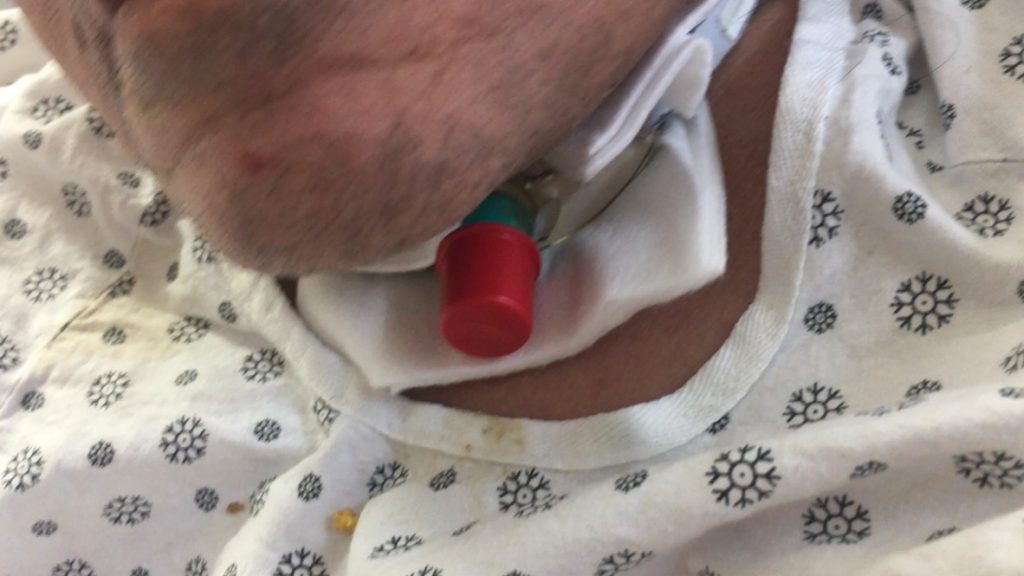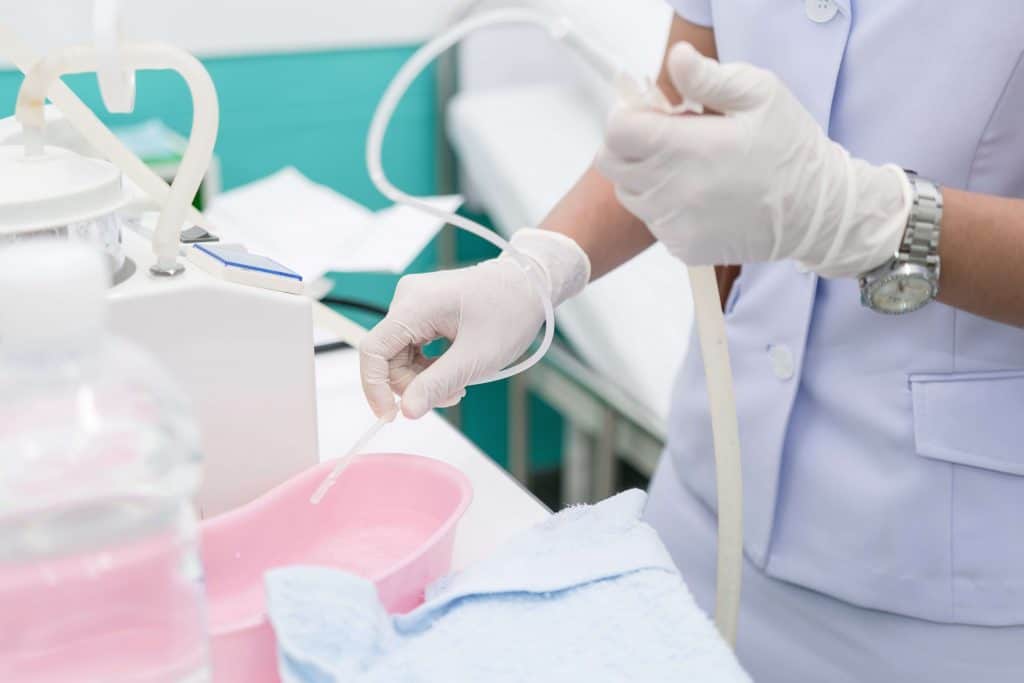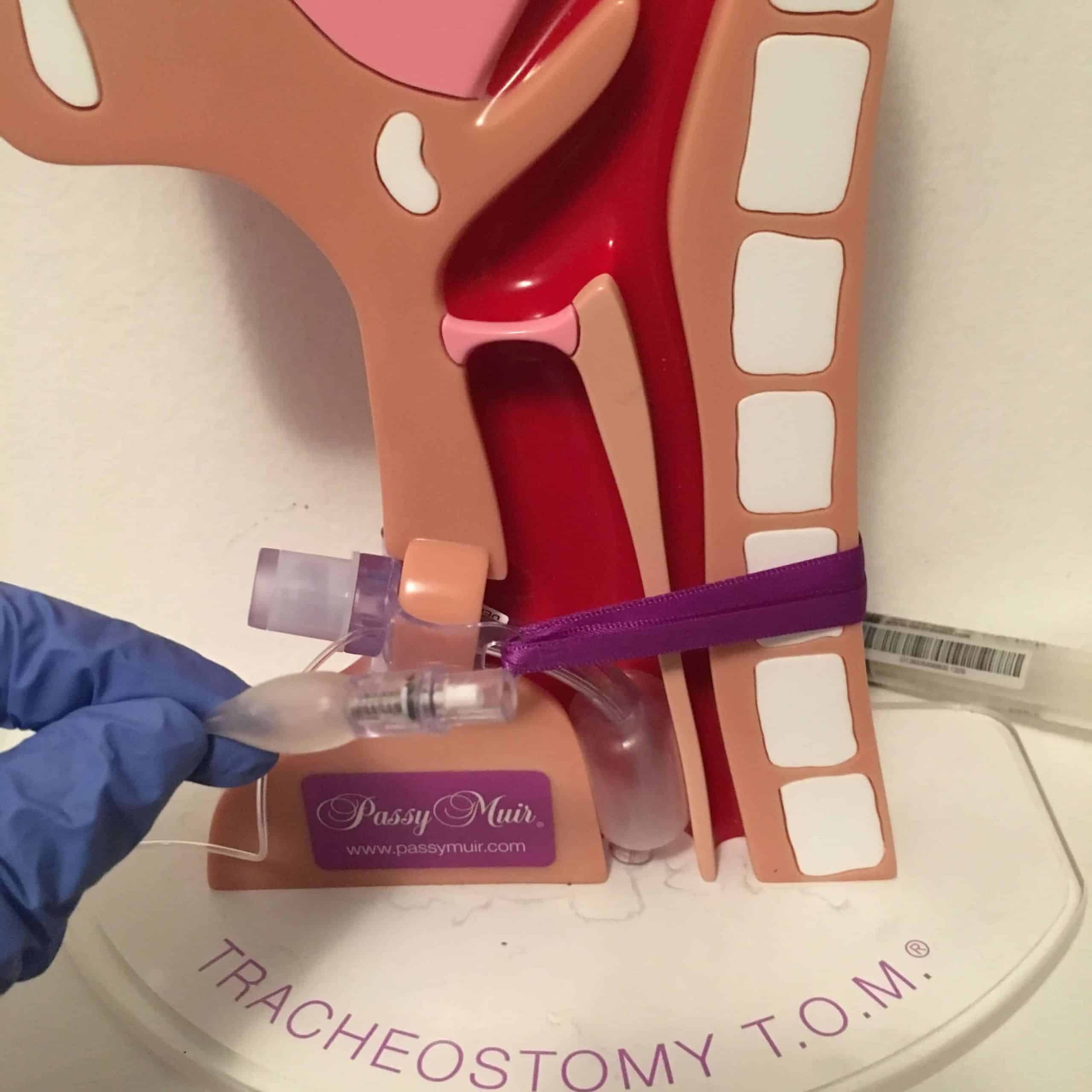35 Trach Mist Continuous to Help Secretions Moist check and Add Distilled H2
Secretion Management
The normally closed respiratory system can be considered as "open" due to the tracheostomy tube, allowing air to escape from the tube. Airflow is redirected and bypasses the upper airway, which normally warms and filters the air. The air is typically drier and cooler when moving through a tracheostomy tube, which can lead to secretion retention. The lack of airflow through the upper airway also results in reduced sensation in that area. If the individual does not feel the secretions in the airway, secretions build up and stagnate. A general reduction in swallowing of secretions leads to muscle disuse which furthers escalates the cycle of impaired secretion management for tracheostomy patients. The tracheostomy tube is also a foreign object, and the body responds by producing more secretions.
The cough reflex is also impaired due to the open tracheostomy tube and lack of airflow through the upper airway. The cough reflex is vital in mobilizing secretions and acts as a protective mechanism to remove of foreign material from the airway. Subglottic pressure was measured with an open tracheostomy tube and found to be 0cmH20 (Gross, R). Subglottic pressure is required to produce an effective cough. Furthermore, individuals with tracheostomy may also have retained secretions and poor coughing due to muscle weakness and general immobility. Finally, patients may be on fluid restrictions which can further thicken secretions. All of these can contribute to the need to provide assistance in secretion management for individuals with tracheostomy.
The mobilization of secretions is important in caring for individuals with tracheostomy. Mobilizing secretions requires secretion removal, humidification, hydration, and physical mobilization of the individual. Secretion removal is accomplished mainly by suctioning, either through an open or closed-circuit technique. Humidification is a standard of care for patients with tracheostomy to help thin secretions and reduce the likelihood of mucous plugs. Suctioning and humidification are vital in proper care, but are ways to deal with the symptoms that occur from the effects of the tracheostomy, instead of treating the root cause of secretion issues.
Since the main cause of secretion management issues is the lack of airflow and open tracheostomy system, the solution to fighting the cycle of secretions is to provide airflow to the upper airway by deflating the cuff and providing a closed respiratory system. A closed system is achieved by occlusion of the tracheostomy by digital occlusion, a bias-closed position speaking valve (Passy-Muir Valve) or with capping. Cuff deflation and Passy-Muir and capping trials must be assessed on a patient by patient basis as not all individuals can tolerate. Cough techniques and expiratory muscle strength training can then take place in order to rehabilitate weakened muscles.

slaughterforithave1991.blogspot.com
Source: https://www.tracheostomyeducation.com/blog/secretion-management/






0 Response to "35 Trach Mist Continuous to Help Secretions Moist check and Add Distilled H2"
Post a Comment